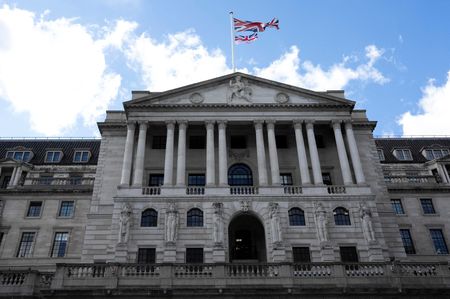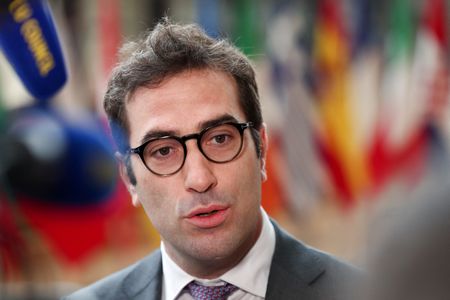By Joel Jose
(Reuters) – Major brokerages including Goldman Sachs, Morgan Stanley and BofA expect no more interest rate cuts by the Bank of England this year after the British central bank kept its key rate on hold.
The BoE’s widely expected pause on Thursday followed its quarter-point reduction in August, as it navigates sticky inflation and a murky outlook for growth and jobs
Data on Wednesday showed UK inflation held at 3.8% in August, the highest among major advanced economies.
Goldman Sachs and Morgan Stanley now project the next easing cycle to start in February 2026, with quarterly reductions thereafter, but say a December cut could be warranted if near‑term data deteriorate notably.
UBS and BofA Global Research also forecast that cuts will not resume this year, with BofA seeing the BoE start easing in February and April 2026.
Markets are pricing in just 7.5 basis points of easing by this year-end, according to data compiled by LSEG, implying roughly a 28% chance of another rate cut by BoE in 2025.
The BoE held its forecast for inflation to peak at 4% this month and ease slowly to its 2% target by mid-2027, with Governor Andrew Bailey warning the economy remains vulnerable and any rate cuts will need to be gradual and carefully considered.
“The MPC’s reactive approach leaves significant room for short-term changes,” analysts at Citigroup said in a note.
Meanwhile, British brokerage Barclays retained its base case that a November cut is possible because it expects upcoming data to be softer, which would support monetary easing, especially given the BoE’s data-dependent stance.
BNP Paribas sees the next cut in December, saying the delay offers the central bank a buffer against uncertainty.
(Reporting by Joel Jose, Editing by Tasim Zahid)









